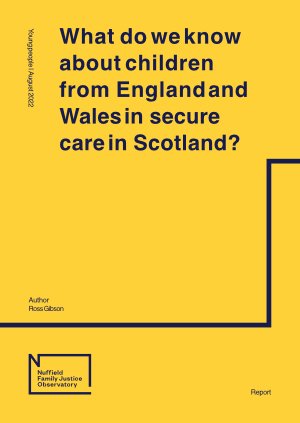By Gillian Hunter, Claire Ely, Carmen Robin-D’Cruz and Stephen Whitehead
This report details the findings of a research project which was jointly undertaken by the Centre for Justice Innovation (CJI) and the Institute for Crime and Justice Policy Research (ICPR), Birkbeck, with funding from the Nuffield Foundation.
The project examined current practice in the youth court, including how the court was meeting the needs of vulnerable young people. Specifically, we were interested in understanding current youth court practice and exploring the potential impact of practices aligned with problem-solving justice – an evidence-based approach which seeks to hold people accountable and to help them to proactively engage with the court to address the factors driving their offending.
Background In the last 10 years, there has been a 75% decline in cases coming into the youth court, caused by both falls in youth crime and the youth justice system’s success in diverting eligible cases away from court. However, while there are currently fewer court-involved young people, they tend to have more significant welfare and other needs as well as more serious offending profiles than they did a decade ago. Having fewer court-involved young people to work with gives the youth justice system a golden opportunity to concentrate its energies on further reducing reoffending and preventing future harm. To that end, the Carlile Inquiry in 2014 (in which the current Lord Chancellor participated), the Taylor Review in 2016 and the Lammy Review in 2017 all advised that youth court practice should become more ‘problem-solving’, to better address children’s underlying welfare needs. Missed opportunities Our research follows on from these reviews. It looks specifically at current youth court practice through the lens of evidence-led problem-solving justice. It does this by focussing on the procedural fairness of youth court hearings; the specialism of youth court practitioners; how multi-agency youth offending services provide collaborative interventions and supervision to court-involved children and young people; the extent to which youth courts engage in judicial monitoring post-sentence; and the operational environment surrounding youth court practitioners. Fieldwork was conducted in three sites across England, comprising five youth courts and associated youth offending services, between February and October 2019. During our research, we came across many dedicated practitioners who were committed to improving the support for children and young people appearing in court, and we saw examples of creative and innovative practice being developed locally. One site was trialling a form of post-sentence judicial monitoring (of the type recommended in the Carlile and Taylor reviews) to provide informal, YOS-managed review hearings for young people on Youth Rehabilitation Orders (YROs). A second site was preparing to pilot a similar approach, in which magistrates, in partnership with the YOS, will hold informal, monthly reviews of YROs. However, we also observed practice which fell short of what is recommended for the youth court: long delays, especially in cases coming to court; lack of availability of professionals with the required specialisms for youth court; limited services to respond to children and young people’s speech, language and communication or mental health needs; limited engagement by children’s services (understandable given their resource constraints); and generally, a more difficult operational environment, resulting from the twin impacts of constant court modernisation (including court closures and mergers) and reductions in funding. What we found far too often was an over-burdened system in which practitioners struggled to deliver the services required of them by national government. As a result, vulnerable children and young people coming before the court are not always receiving the treatment they need – making it all the more likely they will offend again. Time to get it right What our research has shown is that youth courts need to be enhanced to change outcomes for the vulnerable young people who appear there. We are very aware that the Carlile, Taylor and Lammy review teams have been here before us. Our research has walked in their footprints and, sadly, we have seen that their calls for significant reform have remained largely unanswered. We think it is time to get it right. 1. Tackle pre-court delays and maximise diversion opportunities pre-court There is urgent need for action to address the delays between offences and the commencement of court proceedings. These delays impact on everyone, including victims, witnesses and defendants. A key problem is delayed charging decisions by the police, which were also shown to disrupt children and young people’s own rehabilitative efforts. While we found strong support for out-of-court resolution of children and young people’s cases (and strong support for victim involvement and restorative justice in these disposals), we also found evidence of cases still coming to court that should have been resolved out of court. We recommend that (i) Her Majesty’s Inspectorate of Constabulary, the National Police Chief’s Council and the Home Office develop a protocol which limits the amount of time children and young people can be kept under investigation before a charging decision is made (though there may need to be exclusions for the most complex cases); (ii) we recommend that the Youth Justice Board should publish clear national guidance on effective, evidence-based point-of-arrest diversion and out-of-court disposal practice.
Centre for Justice Innovation, 2022. 48p.




















